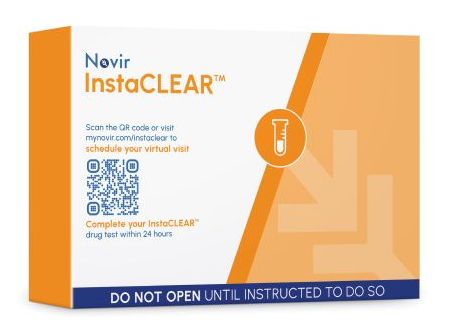Derived from the poppy plant, opiates such as codeine and morphine are commonly used as painkillers. However, they are also becoming increasingly popular for recreational use. Our standard opiate test detects substances like codeine, morphine, and heroin. Users may snort, smoke, or inject these drugs, which often lead to both strong physical and psychological addiction.
However, it’s important to note that modern synthetic opiates do not appear on a standard 5- or 10-panel drug test. To detect substances like hydrocodone, hydromorphone, oxycodone, or oxymorphone, you must order an Expanded Panel. Because of their broader classification, we use the term “opioids” to refer to both standard and synthetic opiates. Therefore, depending on your testing needs, you can choose either a standard 5- or 10-panel drug test or opt for an Expanded Panel for more comprehensive results.
What Are OPIOIDS?
The term “opioids” is broader than “opiates,” a word we tend to hear more frequently. While opiates typically refer to naturally derived substances such as morphine, codeine, and 6M-AM (a metabolite of heroin), opioids also include synthetic versions. These commonly misused synthetic opioids—such as oxycodone, oxymorphone, hydromorphone, and hydrocodone—are widely known by their trade names: OxyContin®, Percodan®, Percocet®, Vicodin®, Lortab®, Norco®, Dilaudid®, and Exalgo®.
Unlike natural opiates, synthetic opioids are produced in laboratories. Nevertheless, they act on the same receptors in the brain to deliver pain relief. Because of their effectiveness, many of these synthetic opioids have received approval for medical use. However, due to their potency, they are also highly prone to misuse and addiction.
Symptoms and Signs
The following are observable, possible signs and symptoms of Opioids use that should be documented by a supervisor:
What do they look like?
Most synthetic opioids are encountered as tablets, mimicking pharmaceutical opioid products. Clandestinely produced synthetic opioids are found as a single substance in combination with other opioids (fentanyl, heroin) or other substances.
Heroin is typically sold as a white or brownish powder, or as the black sticky substance known on the streets as “black tar heroin.” Most street heroin is “cut” with other drugs or with substances such as sugar, starch, powdered milk, or quinine.
How Opioids affects the mind and body?
Some effects include relaxation, euphoria, pain relief, sedation, confusion, drowsiness, dizziness, nausea, vomiting, urinary retention, pupillary constriction, and respiratory depression. Effects are not unlike opiates like codeine and morphine.
Overdose effects of synthetic opioids are similar to other opioid analgesics and may include stupor, changes in pupillary size, cold and clammy skin, cyanosis, coma, and respiratory failure leading to death. The presence of triad of symptoms such as coma, pinpoint pupils, and respiratory depression may indicate opioid poisoning.
Impact On The Workplace
Short-term effects of opioid abuse—clouded mental functioning, nausea, and drowsiness—have clear implications and impact on the workplace. However, the longer-term threats to overall health and addiction have an even greater potential to create problems for the employee, his family, co-workers and the employer.
That is because a person with an opioid use disorder—especially someone using heroin—often becomes primarily focused on acquiring and using the drug. The most obvious concerns are job-related mistakes, increased medical costs, and inappropriate behavior.

